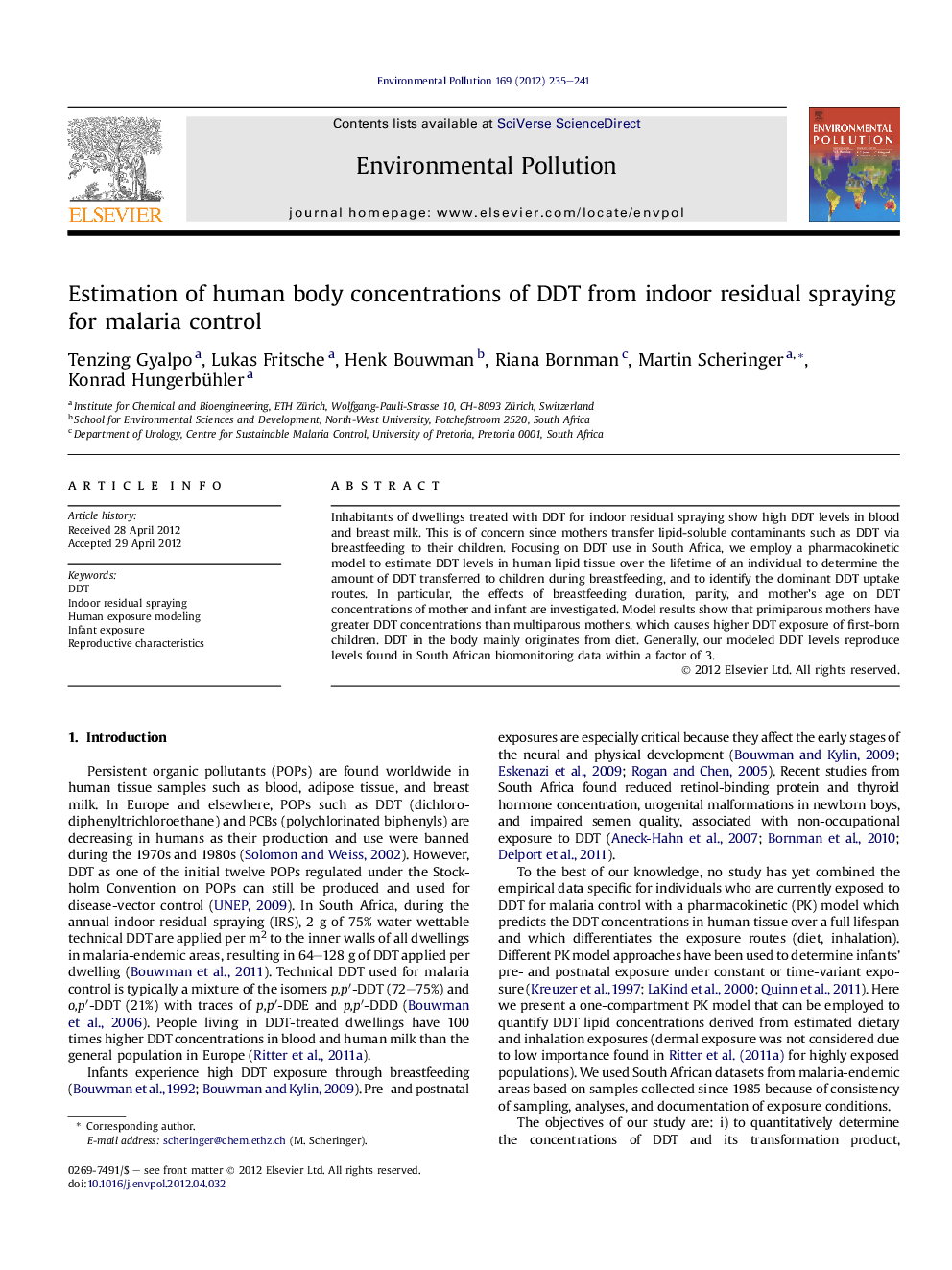| کد مقاله | کد نشریه | سال انتشار | مقاله انگلیسی | نسخه تمام متن |
|---|---|---|---|---|
| 4424822 | 1619203 | 2012 | 7 صفحه PDF | دانلود رایگان |

Inhabitants of dwellings treated with DDT for indoor residual spraying show high DDT levels in blood and breast milk. This is of concern since mothers transfer lipid-soluble contaminants such as DDT via breastfeeding to their children. Focusing on DDT use in South Africa, we employ a pharmacokinetic model to estimate DDT levels in human lipid tissue over the lifetime of an individual to determine the amount of DDT transferred to children during breastfeeding, and to identify the dominant DDT uptake routes. In particular, the effects of breastfeeding duration, parity, and mother's age on DDT concentrations of mother and infant are investigated. Model results show that primiparous mothers have greater DDT concentrations than multiparous mothers, which causes higher DDT exposure of first-born children. DDT in the body mainly originates from diet. Generally, our modeled DDT levels reproduce levels found in South African biomonitoring data within a factor of 3.
► Comparison of one-compartment pharmacokinetic model with biomonitoring data.
► Pre- and postnatal exposure of infants depends on breastfeeding duration and parity.
► Dietary exposure of DDT is the dominant uptake route in South Africa.
► Elimination half-lives of DDT and DDE are shorter in children than in adults.
Journal: Environmental Pollution - Volume 169, October 2012, Pages 235–241